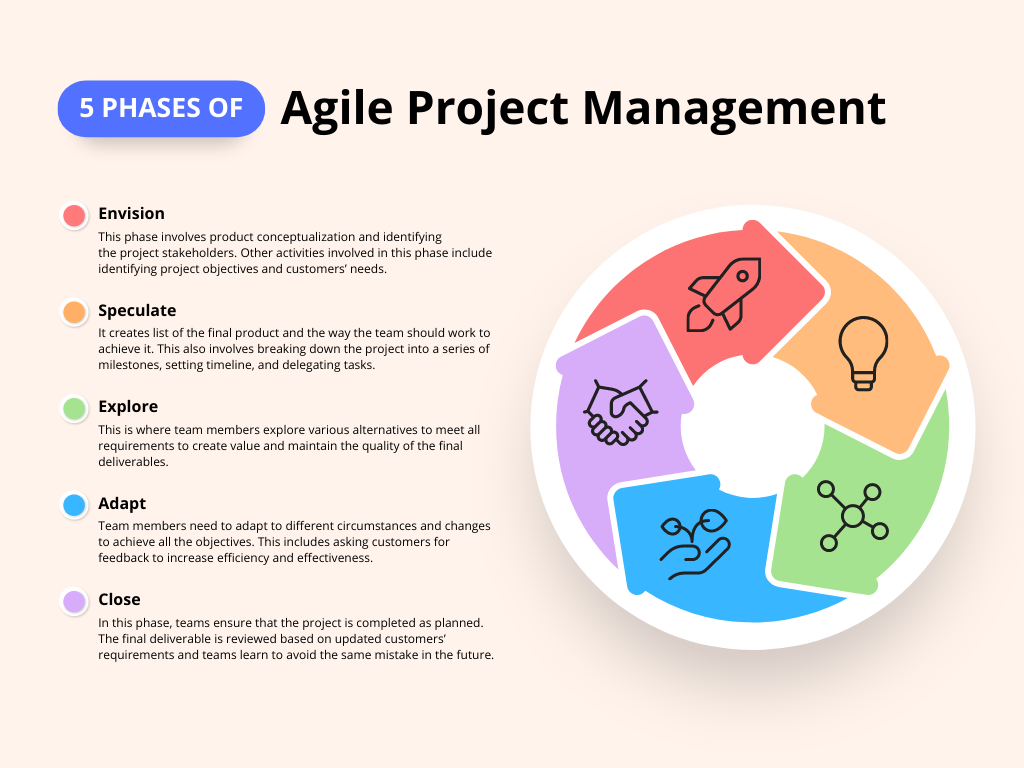
Agile project management has become a buzzword in the business world over the last decade, with many companies embracing the Agile methodology to manage projects more efficiently. In this article, we’ll dive deeper into what Agile project management is, how it works, and how to implement it effectively using the right tools and practices.
What is Agile project management?
Agile project management is a flexible and iterative approach to project management that emphasizes collaboration, adaptability, and customer satisfaction. The Agile methodology is based on the Agile Manifesto, a set of values and principles for software development. Still, it can be applied to any project, from product development to marketing campaigns.
It focuses on delivering value to customers early and often by breaking down projects into smaller chunks called iterations or sprints. Each iteration is a mini-project with its requirements, goals, and deliverables. At the end of each iteration, the team reviews the results, gets feedback from stakeholders, and adjusts the plan accordingly. This allows teams to respond to changes quickly and avoid wasting time and resources on features that are not needed or do not meet the customer’s needs.
How to implement Agile project management effectively
Implementing this approach to project management requires a shift in mindset and a willingness to embrace change. Here are some steps to follow to implement Agile project management effectively:
Define the project scope and goals: Agile project management requires a clear understanding of what the project is and what success looks like. Define the project scope, goals, and deliverables, and communicate them to the team and stakeholders.
Build a cross-functional team: Agile project management relies on collaboration and cross-functional teams. Build a team with the right mix of skills and expertise, including developers, designers, marketers, and product owners.
Choose the proper Agile framework: Agile project management offers several frameworks, including Scrum, Kanban, and Lean. Choose the best fit for your project’s needs and team’s strengths.
Set up the Agile tools: Agile project management requires specific tools to manage the project, such as project management software, task boards, and communication tools. Choose the tools that best suit your team’s needs and preferences.
Plan the iterations: Divide the project into smaller ones, each with goals, requirements, and deliverables. Plan the iterations with the team, and ensure everyone understands the plan and their role in it.
Hold daily stand-up meetings: Agile project management relies on daily communication and transparency. Hold daily stand-up meetings with the team to review progress, identify roadblocks, and plan the next steps.
Review and adjust the plan: At the end of each iteration, review the results, get feedback from stakeholders, and adjust the plan accordingly. This allows the team to respond to changes quickly and adapt to the customer’s needs.
Conclusion
Agile project management is a flexible and iterative approach to project management that can help teams deliver value to customers early and often. To implement Agile project management effectively, you must define the project scope and goals, build a cross-functional team, choose the proper Agile framework and tools, plan the iterations, hold daily stand-up meetings, and review and adjust the plan regularly. By following these steps, you can embrace change, respond to customer needs quickly, and achieve project success.



